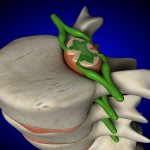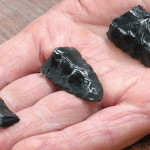
The great desert burrowing skink is the only lizard species which constructs family homes. Credit: Adam Stow
Scientists have unearthed an extensive lizard family business.
Steve McAlpin, Paul Duckett and Adam Stow, from Macquarie University, have revealed that the Great Desert Burrowing Skink, from the sandy plains of Central Australia, live in family groups in elaborate network of tunnel complexes.
The study, based in Uluru Kata Tjuta National Park, suggests that the skinks appear to invest in long-term housing structures, which can extend over 13 metres, have 20 entrances and even areas zoned as latrines. According to Stow “they can construct a surprisingly large multi tunnelled system in a single season (year) ““ although further extensions are carried out on an annual basis.”
This family home appears to benefit these lizards; however no other lizards, from over 5000 species worldwide, cooperate to construct family homes. Stow says “family groups are very rare in lizards- only demonstrated from one Australian group of lizards and more recently a Californian species, the desert night lizard (Xantusia vigilis).”
“The great desert burrowing skink is the first account of a lizard that builds a long-term home for family members – and one in which multiple family members contribute to its construction.
“Consequently, the individual investments made to construct or maintain a burrow system benefit their own offspring, or siblings, over several breeding seasons.”
Adult pairs of great desert burrowing skink have been found to breed together for several years, which may explain these close-knit families. These homes may be occupied for up to seven years, with multiple generations participating in construction and maintenance. A DNA analysis showed that the immature individuals in the burrows were full siblings, which means offspring are staying at home.
According to Stow, there are benefits to staying home for longer. “The monogamy displayed by this species ensures that energy is invested in one’s own offspring and the family group structure may also afford some protection to offspring through parental protection.”
“In future research a new PhD student of mine would like to look at the benefits and costs of such a large and complex burrow system, which might include thermal buffering (and the maintenance of optimal body temperatures for longer) and predator avoidance (lots of escape routes).”






